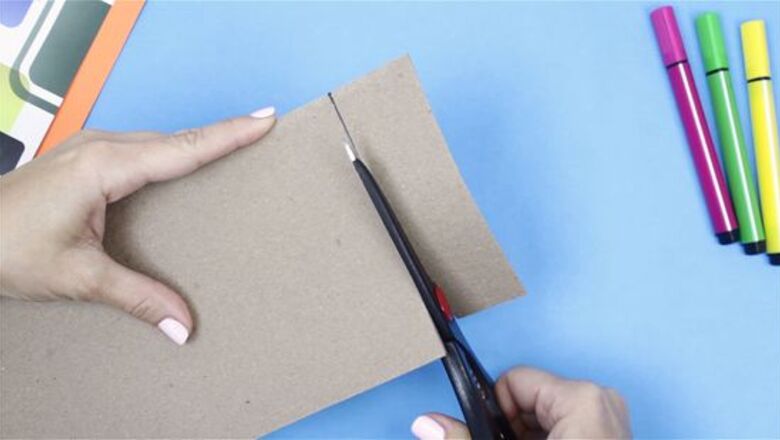
views
Cutting the Cardboard Hull

Cut three same-sized strips of cardboard. Each strip should be the same length and width, but these measurements can be adjusted to make smaller or larger ships. To make a standard sized ship, cut both strips 10 inches (25 cm) long and 3 inches (7.6 cm) wide. Smaller ships can be made by halving the suggested measurements, and larger ships can be made similarly by doubling.
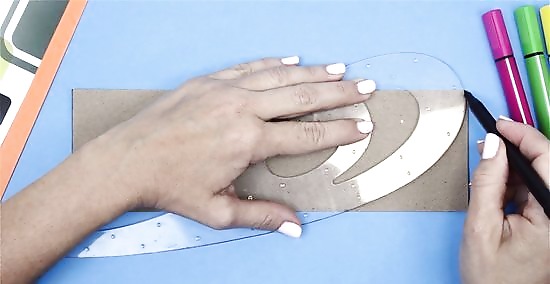
Draw the curve of the boat’s hull on one strip in pencil. The curve should arc from one corner of the strip to the opposite side. The curve should be gradual enough that it meets the opposite side about 2 to 3 inches (5.1 to 7.6 cm) from the strip’s end. The bottom of your boat should not be rounded but flat. Round hulled boats will be difficult to stand upright. Only the front and back of the boat’s hull should curve.
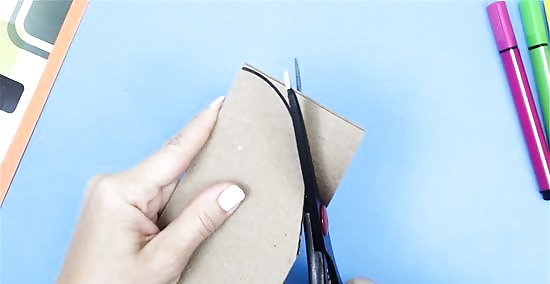
Cut two strips along the curve at one end. Hold two strips together so they’re aligned evenly. The strip with the drawn curve line should be on top. Move your scissors so they cut along this line so that both strips have a curve at one end.
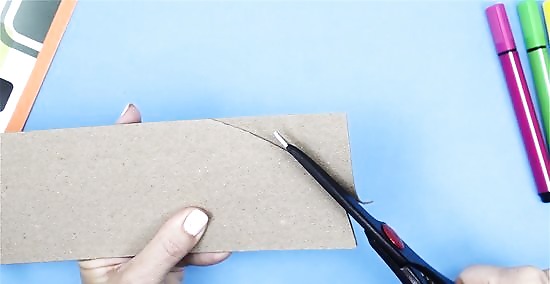
Use the cut strips as templates for their uncut ends. Hold the cut strips evenly aligned, together. Flip the top cut strip lengthwise, then realign the strips. Follow the cut end of the top strip with your scissors to remove the uncut end of the bottom strip. Repeat this process for both strips. When finished with this cut, you should have two strips that curve in the same direction at both ends.

Remove the tip from both curved strips at one end. Realign the strips so they’re even and hold them together. Cut off the pointed end of both of these cardboard pieces with your scissors. The pointed end will be the front of your ship, the cut end will be its back. You don’t have to cut much off the tip. About 1 inch (2.5 cm) should be sufficient.
Gluing the Hull and Masts
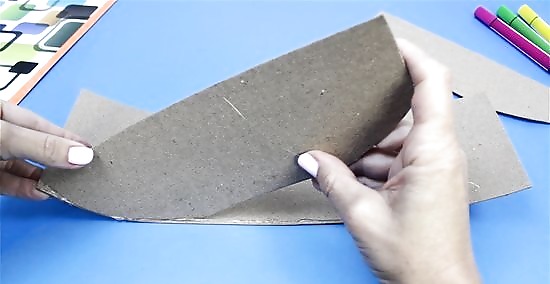
Glue the curved strips to the uncut one. The curved strips will form the sides of your boat, and the bottom uncut strip the bottom. Use hot glue to join the sides of the ship to the bottom. Hold the strips together for about 30 seconds while the glue hardens. Due to the curve of the hull, you’ll need to bend the bottom strip so it follows the arc of sides. Always take care when using a hot glue gun. The tip of the gun and the glue itself will be quite hot and can cause burns.
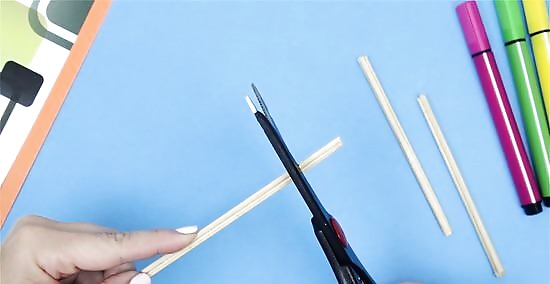
Make three masts for your ship with wooden skewers. Hold three wooden skewers together so their ends are evenly aligned. Take your scissors and carefully cut off the top third of each skewer. Keep two of the cut off ends for later. If your scissors don’t seem to be cutting through the skewers very well, try using a pair of shears or snips/sidecutters.

Push the skewers into the bottom of the boat. The masts will be evenly spaced along the middle of the boat. Use gentle but firm pressure to push the sticks into the base of the boat. Try not to punch the masts all the way through the cardboard. For an even mast placement, measure and mark the mid-point of the ship for the mainmast. Add one additional mark 2 inches (5.1 cm) from that mark towards both ends of the ship for the other fore and aft masts. Inserting the skewers into the bottom of the boat should keep the masts standing up. If the masts feel loose, you can improve stability with a little hot glue or tape.
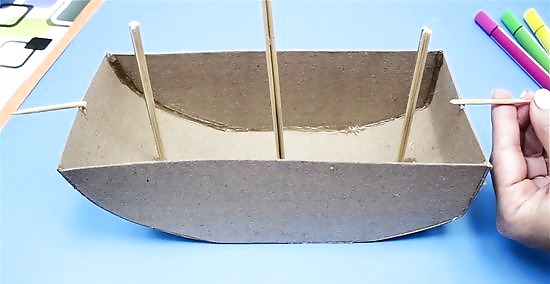
Create a prow and stern with the saved skewer pieces. Take two of the smaller pieces of skewers that you saved earlier and stick one into the front of the ship at an angle. Position the second piece similarly at the back. The front of a boat is called the “prow” and the rear is called the “stern.” If the skewers at the prow and stern of your boat feel loose, stabilize them with a little glue or tape.
Finishing the Ship

Mix a thinned PVA glue solution with water. Combine some PVA glue with a small amount of water in a shallow dish or bowl. Stir the solution with the handle of your paintbrush until it is somewhat runny, but still sticky. PVA glue is the same as the general purpose white glue used in children’s crafts.
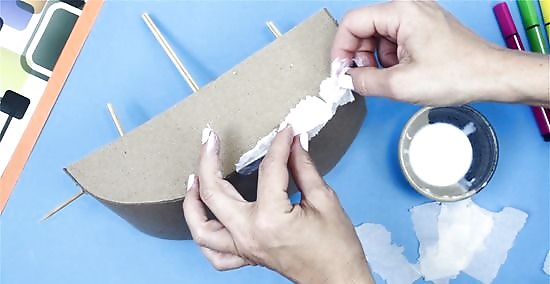
Smooth glued edges by pasting on tissue paper with the glue solution. At this point, the glued edges of your ship will likely be a little rough. Dip thin strips of tissue paper into the glue solution and layer them smoothly over all glued edges. If you don’t mind your ship looking a little rough around the edges, feel free to skip this step. When you don’t have tissue paper, use single-ply paper towel as a substitute.

Paint your ship, if desired. When the tissue paper has dried, it’s time to break out the paint. Use your paintbrush to apply the paint evenly to all visible surfaces of your ship. Feel free to get creative and add unique designs, like a skull and crossbones. Black is the classic color of pirate ships. Merchant ships could be painted a rich brown. You could even paint your ship gold, like Peter Pan's fairy ship. Paint can be messy. Lay down a surface cover, like newspaper or a drop cloth, to prevent the spread of paint to your work surface. Wear old clothing when painting or put on a smock so you don't accidentally stain your clothes while making your ship.

Fashion five sails from white paper. Cut two triangles that are roughly two-thirds the height of your masts. Next, cut a triangle that’s as tall as your masts. The final two sails you'll cut will be roughly the size of your thumb. The sails are another great place to add a personal design. When the triangles are cut, use some markers to add designs like anchors, clouds, or a squid.

Attach the sails to your masts, prow, and stern. PVA glue or tape both work well for attaching sales to the masts, prow, and stern of your ship. The middle mast gets the largest sail, the outside two masts get the two medium sails, and the prow and stern get the small sails.

Give your ship a figurehead. This is a cool way of personalizing your ship. Lego pieces, knickknacks, ornate buttons, figurines, and more can be hot glued to the front of your ship as a figurehead. You can also make your own figurehead from spare cardboard. Cut out a square of cardboard and paint your own design on it. A simple painted skull-and-crossbones hot glued to the front of your ship will give your enemies the chills.
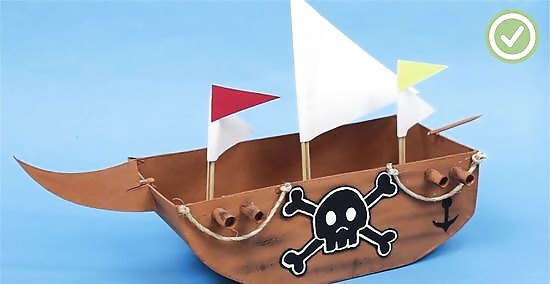
Add rigging to your ship with yarn and enjoy your ship. Rigging refers to the ropes used on ships. Fasten thread along the sides of your ship with PVA glue. When the glue dries, your ship is finished. Simple rigging only needs to be glued to the sides of the ship. However, rigging can be as simple or complex as you desire.

















Comments
0 comment